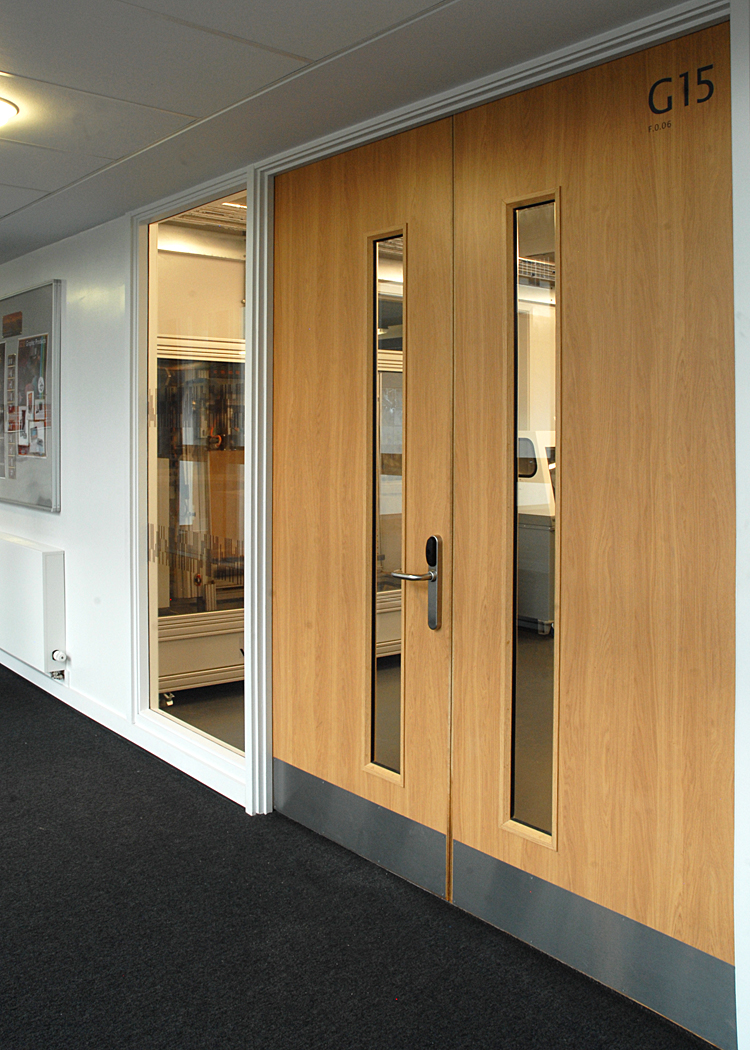Building fire door systems that meet European testing standards
Fire safety glass in fire door systems: Pyroguard’s Steve Goodburn on performance, integration and upcoming industry changes

The role of fire safety glass and sealants
Fire safety glass plays an important role within fire doors. Modern fire safety glass typically consists of multiple panes of glass with fire resistant interlayers. When exposed to high temperatures, these interlayers react, forming a protective barrier against flames, smoke and radiant heat. These interlayers can provide excellent fire resistance, alongside other properties, such as thermal efficiency, acoustic insulation and even attack resistance. As well as being widely used in windows and doors, fire safety glass is increasingly being specified for façades, atria, spandrel panels, partitions and balustrades.
Specifying the right type of fire rated glass ensures a fire door can perform as intended. The wrong choice of glazing system can compromise an entire fire-rated system.
Pyroguard, in association with sister company Mann McGowan has recently launched a new compressible intumescent glazing seal – Pyroglaze Compression (Pyroglaze C). This fire-rated seal is manufactured from graphite and is therefore unaffected by humidity and moisture. Pyroglaze C enhances fire integrity compliance as, in the event of a fire, the intumescent swells to completely seal the glazing rebate, reducing premature ignition risk of glazing beads on the protected face. It is suitable for use with a range of different door cores and has been tested to EN1634-1 in conjunction with Pyroguard Advance to 30 and 60 minutes.
The transition to more rigorous fire door testing standards
From September 2029, fire door systems tested to BS 476-22 will no longer meet UK Building Regulations. Instead, compliance will need to be demonstrated against the European classification system, BS EN 13501-2.
This change forms part of a broader Government strategy to enhance building safety and performance, following the Hackitt Enquiry. This highlighted the need for more rigorous and transparent testing of fire doors to ensure reliable performance in the event of a fire.
While the benefits of harmonised European standards are clear, the transition is not without its challenges, particularly for manufacturers of fire doors and glazed systems, who now face more rigorous testing requirements and new approaches to system design.
The challenges of transitioning to European testing standards
The European testing standards for fire doors use harmonised European testing procedures that are widely regarded as being more stringent. One key difference between British and European testing standards is how the furnace temperatures are measured. BS 476-22 relies on unshielded thermocouples, whereas European standards use shielded thermocouples, which are less responsive to sudden temperature shifts. This results in higher initial thermal loads being inflicted on the test specimen, making it more difficult for products to pass at the early stages of the test.
As a result, door systems that may have achieved classification under the current BS standard might not perform in the same way under EN protocols. This means that manufacturers may need to retest or redesign their products, reconsidering not just individual components, but the entire system.
Why does a system-based approach matter?
Fire safety performance cannot be considered in isolation and therefore every element of a fire door, from the door leaf, glazing and seals, must be tested and certified together. For example, a door leaf that has been independently fire-tested may fail if paired with an incompatible frame, glazed aperture or unsuitable sealing tape.
Adopting a system-based approach is therefore essential, ensuring that all components are tested as part of a unified system. This not only improves compliance but also delivers greater reliability and safety performance.
The industry needs to start preparing for the transition to EN testing standards now. Whether that means retesting existing products or sourcing fully certified solutions that already meet EN classifications, such as Pyroglaze C. Taking proactive steps today will help ensure compliance to meet the more stringent legislation.”
To find out more contact us.
